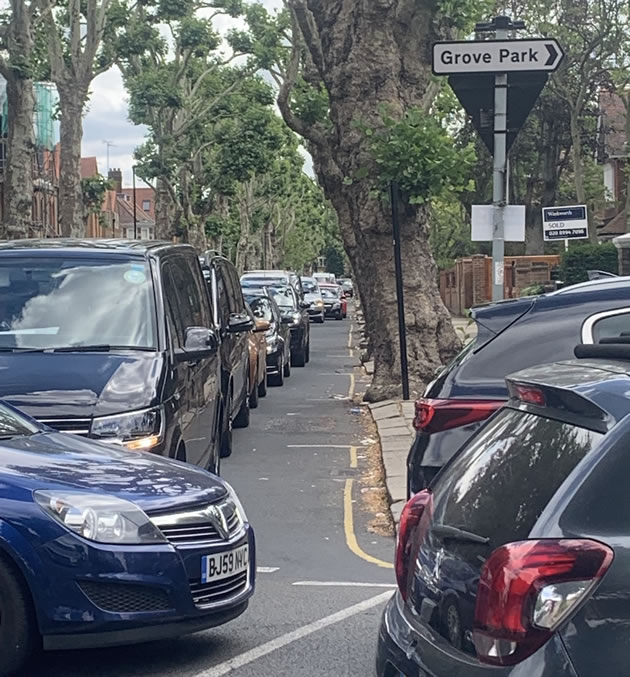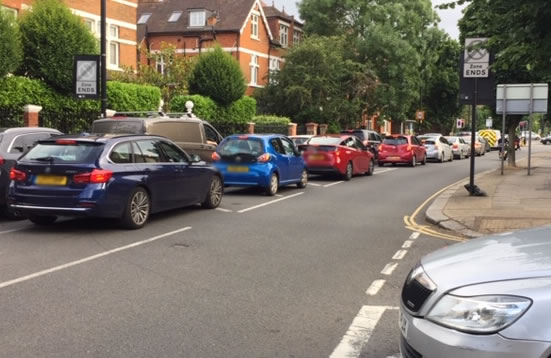Over 6,500 Extra Vehicles Crossing Daily Over Chiswick Bridge
Chiswick still bearing the brunt of increased traffic since closure of Hammersmith Bridge

|
The latest figures show that traffic heading over Chiswick Bridge towards Chiswick has increased by over 6,500 extra vehicles a day since the closure of Hammersmith Bridge.
The figures, based on automatic traffic counters compared 11 April-12 July 2019, with the flow when the bridge was open, and show the scale and distribution of how alternative routes are bearing the brunt of the displaced traffic flow.
Chalkers Corner (dubbed Choker's Corner by some local residents) is seeing an extra 8,000 vehicles a day, while figures for Kew Bridge are 2,000, the Great West Road, 1,000, Fulham Palace Road 3,000, and Roehampton Lane, 5,000.
Over 15,000 additional vehicles a day are being seen on alternative routes across the Thames. TfL says it is trying to mitigate the impact by using real-time reporting and reviewing and refining traffic signal timings to assist buses and account for the changing patterns of general traffic.
"We’ve reviewed and amended traffic signals in the area, and we’re constantly monitoring the area to make further changes as required."
Locals including the nine councillors have been complaining to both TfL and Hounslow Council about the increased traffic, highlighting the hotspots such as Chiswick High Road, Sutton Court Road, and Heathfield Terrace. During a visit in July, TfL had promised to take action on traffic signals when school holidays finished, and we have asked them what action they have taken to reduce the current levels of congestion.
 .
.
Increased traffic in Grove Park
Apart from Chiswick High Road, the inevitable knock on effect of drivers seeking short cuts has also jammed Barrowgate Road, Wavendon Avenue and in Grove Park, Hartington Road is being used as a cut through to Kew Bridge. Heidi Alexander, London’s deputy mayor for transport, came to Chiswick in July to see for herself the impact that the closure of Hammersmith Bridge is having on traffic conditions locally.
They received a pledge from TfL and the deputy Mayor that improvements would be made.
All traffic lights in Chiswick are under SCOOT control – Split Cycle and Offset Optimisation Technique – which allows every traffic light to be adjusted to local conditions. Vehicle detectors in the road feed back data (such as stationery traffic) which is constantly monitored so that traffic lights can be changed to improve traffic flow.
TfL had promised to look at whether changes are responsive enough and if adjustments need to be made.
Explaining that TfL had made adjustments in Chiswick in the last two weeks but that more could be done, Andy Wiseall said, “We’re not leaving it. We are aware that traffic will reduce during school holidays and that we will need to look again at this when schools are back”.
Local councillors have called on TfL traffic engineers and Hounslow’s traffic department to continue to pursue solutions to minimise the impact in Chiswick of the closure of Hammersmith Bridge.”
Cllr Barr said, “The closure of Hammersmith Bridge is having a devastating effect on Chiswick with increased traffic congestion, bumper-to-bumper traffic and at times complete gridlock causing severe delays to journey times. Increased air pollution is also a major concern. I have had reports from residents who are experiencing exacerbations of their respiratory conditions which is very, very concerning. ”
September 20, 2019